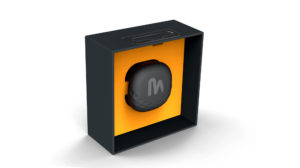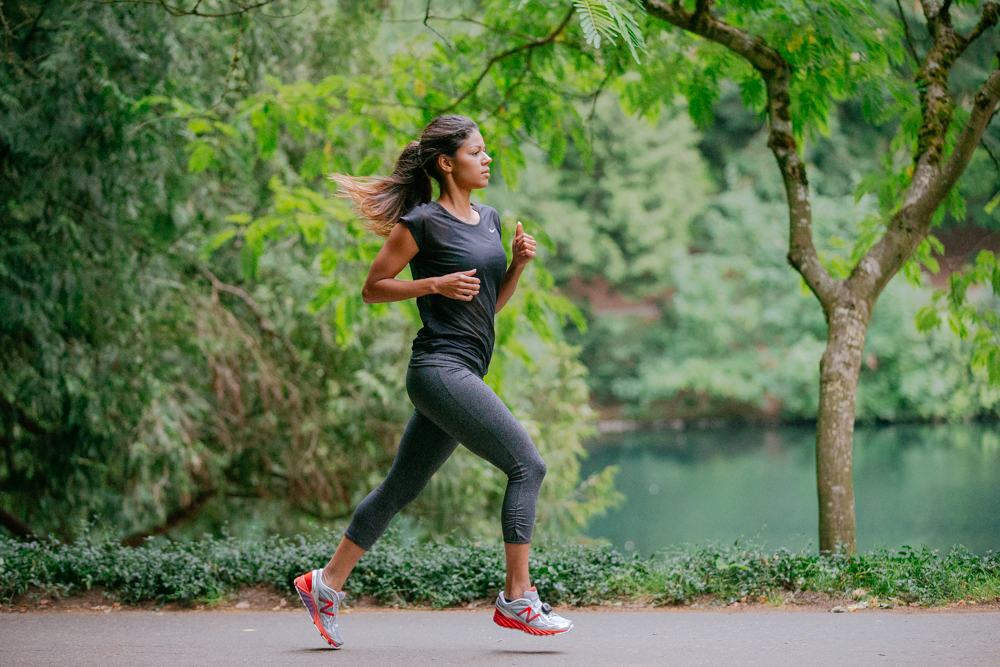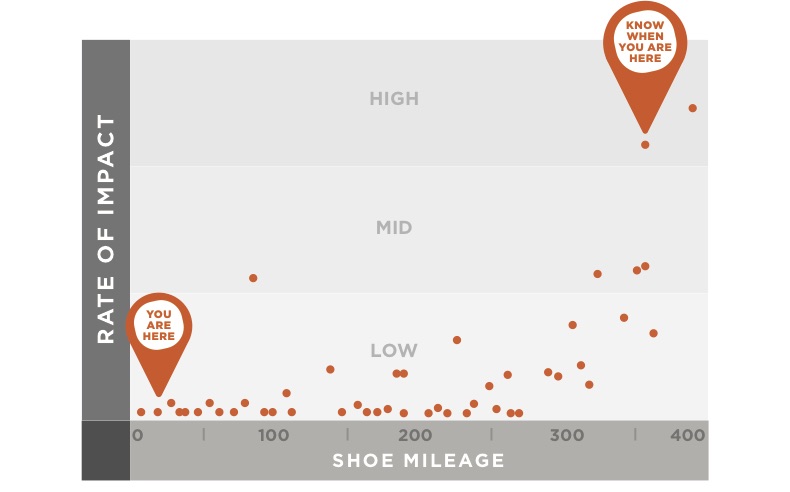If you’re a new MilestonePod user and want to get a better understanding of all the data you can use to keep you healthy and even improve your run performance, you need to read this.
One of the best features of using the MilestonePod is the ability to track the mileage run in your shoes. As you put more miles in your shoes, the shoe will lose the ability to properly protect your feet as the cushioning system breaks down. By properly tracking the mileage of your shoes and replacing them when the cushioning wears out, you’ll decrease your chances of an injury, stay healthy and possibly even improve your performance.
 Speaking of performance, MilestonePod does a lot more than keep track of your miles. It provides valuable metrics that when used properly or with the aid of a coach, can improve your performance in addition to keeping you healthy and letting you know the potential for future injury.
Let’s go over some of the data that will be measured and how best to use it to keep you healthy and improve your performance.
Speaking of performance, MilestonePod does a lot more than keep track of your miles. It provides valuable metrics that when used properly or with the aid of a coach, can improve your performance in addition to keeping you healthy and letting you know the potential for future injury.
Let’s go over some of the data that will be measured and how best to use it to keep you healthy and improve your performance.
Foot Strike is where your foot first makes contact with the ground. There are a lot of opinions on what part of the foot you should be landing – heel, Mid-foot, toe. Everyone is different and foot strike isn’t quite as important if you have a high cadence and low impact. What we do know, is that landing hard on your heel is the equivalent of putting on the brakes. It’s not an efficient way of running, so reducing the amount of force at the point of impact will improve your efficiency. Even runners that predominantly land mid-foot or toe, will start landing on their heel as they begin to tire on a long run. Regardless of where you’re landing, make sure your cadence (see below) is close to 180 SPM and you’re doing a larger percentage of your run in the Low Impact zone (see below).
Rate of impact is the amount of time your body absorbs the forces from making contact with the ground. You should be aiming for a low rate of impact. The best way to reduce the rate of impact is to increase your cadence and shorten your stride. If your rate of impact starts increasing over time while you’re maintaining a high cadence, chances are it may be time to replace your shoes. As a shoes’ cushioning material breaks down, it’s no longer doing it’s job of protecting the foot, which can lead to injury. It’s important to check the mileage of your shoes and compare it to the rate of impact. You can export this data as an Excel file to compare.
 Stride Length is the average length of one full stride. Measured in inches, a stride is the distance between your left and right foot touching the ground. Of course, everyone’s physiology will affect Stride Length, so there is no target number for this metric. It’s best to look at your stride length and evaluate over time. As your stride length increases, so should your speed. Be careful not to over-stride. Maintain 180 SPM to reduce the possibility of over-striding.
Stride Length is the average length of one full stride. Measured in inches, a stride is the distance between your left and right foot touching the ground. Of course, everyone’s physiology will affect Stride Length, so there is no target number for this metric. It’s best to look at your stride length and evaluate over time. As your stride length increases, so should your speed. Be careful not to over-stride. Maintain 180 SPM to reduce the possibility of over-striding.
 Speaking of performance, MilestonePod does a lot more than keep track of your miles. It provides valuable metrics that when used properly or with the aid of a coach, can improve your performance in addition to keeping you healthy and letting you know the potential for future injury.
Let’s go over some of the data that will be measured and how best to use it to keep you healthy and improve your performance.
Speaking of performance, MilestonePod does a lot more than keep track of your miles. It provides valuable metrics that when used properly or with the aid of a coach, can improve your performance in addition to keeping you healthy and letting you know the potential for future injury.
Let’s go over some of the data that will be measured and how best to use it to keep you healthy and improve your performance.
 Foot Strike
Foot Strike
Foot Strike is where your foot first makes contact with the ground. There are a lot of opinions on what part of the foot you should be landing – heel, Mid-foot, toe. Everyone is different and foot strike isn’t quite as important if you have a high cadence and low impact. What we do know, is that landing hard on your heel is the equivalent of putting on the brakes. It’s not an efficient way of running, so reducing the amount of force at the point of impact will improve your efficiency. Even runners that predominantly land mid-foot or toe, will start landing on their heel as they begin to tire on a long run. Regardless of where you’re landing, make sure your cadence (see below) is close to 180 SPM and you’re doing a larger percentage of your run in the Low Impact zone (see below).
Cadence
Cadence is the term used to describe how often your foot contacts the ground during every minute. It is also commonly referred to as “steps per minute” or “strides per minute” (SPM), which is a measure of how frequently you take steps while running. Running with a high cadence typically means less force on your hips and knees and can help with injury prevention.Why is it important?
If your cadence is too low, it’s often an indication that you are either over-striding or wasting energy due to excessive motion (e.g., bounce). If your cadence is too high, it’s often an indication that your flight time and stride length are too short, which creates an inefficient shuffling pattern when you run. Your goal should be to get to 180 SPM or close to it.How to Improve Cadence:
There are a several ways to shorten your stride and increase your cadence. Using a metronome (free Apps are available for your phone) set to 180 while running will provide a way to get a feel for running at that cadence. If your cadence is 160 – 170 SPM, we recommend to set the metronome 5 beats faster than your current cadence and gradually increase it as you become more comfortable. We want to avoid any drastic changes that can lead to injury. Music is another great way to help with cadence. Search for music with 170 – 180 beats per minute (BPM). Music is not only a great way of motivating yourself, it can provide you the beat to improve your cadence. While running think baby steps. Instead of taking long strides, focus on taking really short steps. Try running in place and then move forward as if you’re running through a puddle, landing quickly and lightly.Ground Contact
Ground Contact is the measured in milliseconds (ms) and is the average amount of time your foot spends on the ground. As your speed increases, the amount of time your foot is on the ground decreases. The less time your foot is on the ground, the less impact through your body, which is what we want to accomplish. Rate of Impact
Rate of Impact
Rate of impact is the amount of time your body absorbs the forces from making contact with the ground. You should be aiming for a low rate of impact. The best way to reduce the rate of impact is to increase your cadence and shorten your stride. If your rate of impact starts increasing over time while you’re maintaining a high cadence, chances are it may be time to replace your shoes. As a shoes’ cushioning material breaks down, it’s no longer doing it’s job of protecting the foot, which can lead to injury. It’s important to check the mileage of your shoes and compare it to the rate of impact. You can export this data as an Excel file to compare.
Stride Length
 Stride Length is the average length of one full stride. Measured in inches, a stride is the distance between your left and right foot touching the ground. Of course, everyone’s physiology will affect Stride Length, so there is no target number for this metric. It’s best to look at your stride length and evaluate over time. As your stride length increases, so should your speed. Be careful not to over-stride. Maintain 180 SPM to reduce the possibility of over-striding.
Stride Length is the average length of one full stride. Measured in inches, a stride is the distance between your left and right foot touching the ground. Of course, everyone’s physiology will affect Stride Length, so there is no target number for this metric. It’s best to look at your stride length and evaluate over time. As your stride length increases, so should your speed. Be careful not to over-stride. Maintain 180 SPM to reduce the possibility of over-striding.


